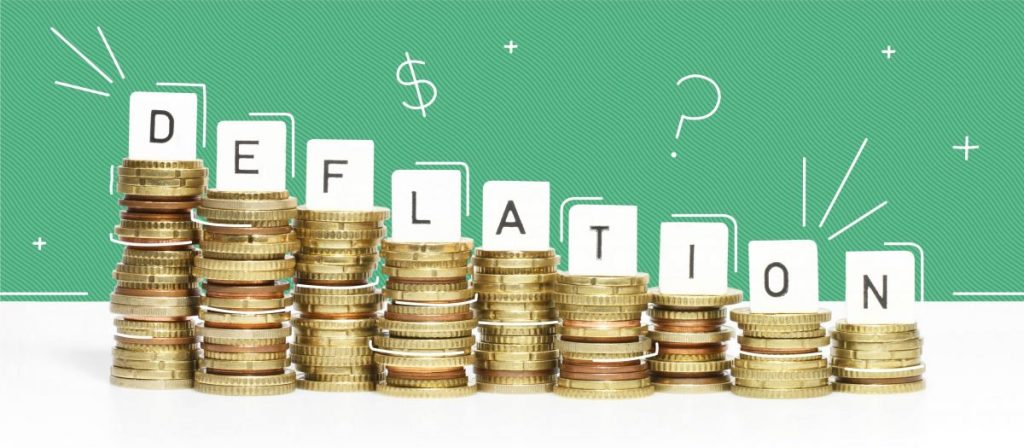Deflation


What is Deflation?
Deflation is defined in economics as a drop in the general price level of goods and services. Deflation happens when the rate of inflation falls below 0%. (a negative inflation rate). Over time, inflation diminishes the value of currency, but rapid deflation boosts it. This enables for the purchase of more goods and services with the same quantity of currency. Deflation is distinct from disinflation, which is a slowing of the inflation rate, i.e. when inflation falls but remains positive.
Understanding Deflation
Economists typically agree that a sudden deflationary shock is a concern in a contemporary economy because it raises the actual value of debt, especially if the deflation is unanticipated. Deflation can further exacerbate recessions and lead to a deflationary spiral. Some economists suggest that extended deflationary periods are tied to the lack of technical advancement in an economy, because as productivity increases (TFP), the cost of things lowers.
Deflation usually occurs when supply is high (excess production), demand is low (consumption falls), or the money supply falls (often as a result of a contraction caused by reckless investment or a credit crunch) or because of a net capital outflow from the economy. It can also emerge as a result of excessive competition and insufficient market concentration.
Latest news about Deflation
« Back to Glossary IndexDisclaimer
In line with the Trust Project guidelines, please note that the information provided on this page is not intended to be and should not be interpreted as legal, tax, investment, financial, or any other form of advice. It is important to only invest what you can afford to lose and to seek independent financial advice if you have any doubts. For further information, we suggest referring to the terms and conditions as well as the help and support pages provided by the issuer or advertiser. MetaversePost is committed to accurate, unbiased reporting, but market conditions are subject to change without notice.
About The Author
Damir is the team leader, product manager, and editor at Metaverse Post, covering topics such as AI/ML, AGI, LLMs, Metaverse, and Web3-related fields. His articles attract a massive audience of over a million users every month. He appears to be an expert with 10 years of experience in SEO and digital marketing. Damir has been mentioned in Mashable, Wired, Cointelegraph, The New Yorker, Inside.com, Entrepreneur, BeInCrypto, and other publications. He travels between the UAE, Turkey, Russia, and the CIS as a digital nomad. Damir earned a bachelor's degree in physics, which he believes has given him the critical thinking skills needed to be successful in the ever-changing landscape of the internet.
More articles

Damir is the team leader, product manager, and editor at Metaverse Post, covering topics such as AI/ML, AGI, LLMs, Metaverse, and Web3-related fields. His articles attract a massive audience of over a million users every month. He appears to be an expert with 10 years of experience in SEO and digital marketing. Damir has been mentioned in Mashable, Wired, Cointelegraph, The New Yorker, Inside.com, Entrepreneur, BeInCrypto, and other publications. He travels between the UAE, Turkey, Russia, and the CIS as a digital nomad. Damir earned a bachelor's degree in physics, which he believes has given him the critical thinking skills needed to be successful in the ever-changing landscape of the internet.


















































